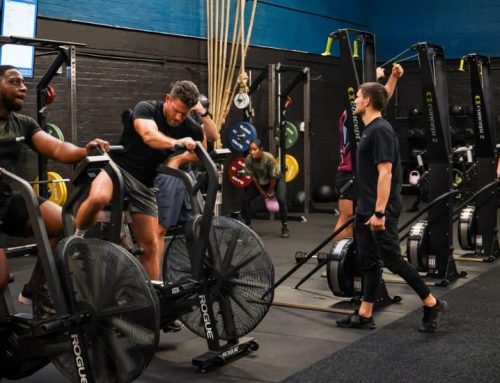Are you tired of spending countless hours at the gym, only to see minimal gains in your lifts? Have you tried every protein powder and pre-workout imaginable but still can’t seem to break through that performance plateau? Well, fear not my friends, because I have the solution you never knew you needed: fasting. Yes, that’s right. I know it sounds crazy, but trust me, there’s a method to this madness. Strap on your lifting gloves and get ready to learn how fasting can kick your gains into overdrive.
Contents
- 1 1. Introduction to Fasting and Weight Training
- 2 2. Mechanisms of Fasting-Induced Performance Enhancement
- 3 3. Effects of Fasting on Strength and Endurance Exercise
- 4 4. Incorporating Fasting Strategies into Your Weight Training Routine
- 5 5. Precautions and Considerations to Keep in Mind When Fasting and Lifting
1. Introduction to Fasting and Weight Training
Fasting and weight training are like two peas in a pod – they go hand in hand. If you’re looking to lose weight while gaining muscle, this is the perfect combo for you! But before you dive headfirst into fasting and weight training, let’s take a closer look.
First off, what is fasting? Fasting is the practice of abstaining from food or drink for a certain period of time. Whether it’s for religious reasons or health benefits, fasting has been around for centuries. But did you know that fasting can actually boost your weight training regimen? By fasting, your body will use stored fat as an energy source during your workout, helping you shed those pesky love handles.
Now, let’s talk about weight training. This isn’t your 5-pound dumbbell kind of workout – we’re talking serious gains here. Weight training involves lifting weights or using resistance to build muscle mass, increase strength, and burn fat. And when paired with fasting, the results can be even more impressive! By lifting weights while fasting, you’ll burn more calories and promote muscle growth at the same time. Win-win, am I right?
To sum it up, fasting and weight training are a dynamic duo that can help you reach your fitness goals. By fasting, you’ll tap into your body’s fat stores, and by weight training, you’ll build lean muscle mass. So, if you’re up for the challenge, give it a shot! But remember to listen to your body and consult with a professional before starting any new workout or dietary regimen. Stay strong and stay fasted!
2. Mechanisms of Fasting-Induced Performance Enhancement
Let’s face it, fasting isn’t exactly the most enjoyable experience in the world, but it does come with some benefits. One of the most interesting benefits is improved performance. So, how does it work?
First off, fasting forces our bodies to switch from using glucose as the primary source of energy to using fat. This is because when we fast, we are not consuming any food, so our bodies start to break down fat stores to use as fuel instead. This process is called ketosis and can lead to improved cognitive function, increased endurance, and better overall performance.
Secondly, fasting also triggers the production of human growth hormone (HGH) which is responsible for muscle growth and repair, as well as fat burning. So not only does fasting improve our energy levels, but it can also lead to a more toned and muscular physique. Talk about killing two birds with one stone!
- Improved cognitive function
- Increased endurance
- Better overall performance
- Muscle growth and repair
- Fat burning
So, the next time you’re considering skipping a meal or two, just remember that you’re not only doing your waistline a favor, but you’re also improving your athletic abilities. Who knew that not eating could be so beneficial?
3. Effects of Fasting on Strength and Endurance Exercise
So, you’ve decided to give fasting a try. Good for you! But what about your workout routine? Are you worried about losing strength and endurance? Fear not, dear friend! Here are some effects of fasting on strength and endurance exercise:
- Muscle mass: Fasting can lead to a temporary decrease in muscle mass. But don’t freak out just yet! This is because your body is using stored glycogen (aka stored carbohydrates) as fuel instead of using protein from your muscles. Once you start eating again, your body will start to rebuild the lost muscle. So, just think of it as a mini break for your muscles.
- Performance: When you first start fasting, you might notice a decrease in your performance during your workouts. This is because your body is adjusting to using different sources of fuel. But, after a few days, your body will switch to using fat as fuel rather than relying on glycogen. And guess what? Burning fat can actually lead to improved endurance in the long run.
- Recovery: Fasting can actually improve your body’s ability to recover from exercise. How, you ask? Well, fasting triggers a process called autophagy, which is basically your body’s way of cleaning up damaged cells and tissues. So, when you do eat again, your body is better able to absorb nutrients and rebuild those damaged tissues.
So, there you have it – some effects of fasting on strength and endurance exercise. But, keep in mind that everyone’s body is different, and what works for one person might not work for another. So, give fasting a try, but pay attention to how your body responds and adjust accordingly.
4. Incorporating Fasting Strategies into Your Weight Training Routine
Starting your weight training routine can seem like a daunting task, but incorporating fasting strategies into your program can make a world of difference. Here are some fasting strategies that can help you see the best results.
First and foremost, it’s important to remember that everyone’s body is different. Try out different fasting strategies to see what works best for you. One popular strategy is the 16/8 method, where you fast for 16 hours and then eat within an 8-hour window. It’s important to fuel your body with the right foods during this window. Think high-protein and low-carb meals to keep you satiated and energized throughout your weight training.
Another strategy to consider is the 24-hour fast. This method requires you to go a whole day without eating and then breaking your fast the following day. This strategy can be tough, but it can also be rewarding. The key to success is to stay hydrated and listen to your body. If you’re feeling dizzy or overly fatigued, break your fast and try again another day.
Lastly, try adding in some fasted exercise into your routine. This means working out without eating anything beforehand. This strategy can help you tap into your fat stores and burn more calories. But know your limits – only do what feels comfortable and safe for your body. And of course, always stay hydrated.
Incorporating these fasting strategies into your weight training routine can shake things up and help you reach your fitness goals. But as always, consult with a healthcare professional before making any significant changes to your diet and exercise routines. Happy lifting (and fasting)!
5. Precautions and Considerations to Keep in Mind When Fasting and Lifting
First and foremost, remember that you’re a human, not a superhero. We all want to push ourselves to the limit when we’re working out, but when you’re also fasting, it’s easy to cross the line from superhero to super-goner. So, before you start your workout, make sure you’ve eaten enough and hydrated yourself. Get something in your belly, whether it’s a piece of fruit or a whole meal, and drink plenty of water before, during, and after your workout.
Secondly, don’t be afraid to take it slow. Fasting is a powerful tool for growth and transformation, but it can also leave you feeling a little weak and woozy. Pace yourself and listen to your body. If you get dizzy or lightheaded, take a break, sit down, and have a snack. Don’t feel like you have to power through your workout just because you’re fasting. You’ll get more out of your fast if you’re patient and kind to yourself.
Last but not least, be mindful of your form. When you lift, you’re putting a lot of pressure on your body, and when you do it while fasting, you’re asking even more of yourself. Make sure you’ve got good form, whether you’re doing squats, lunges, deadlifts, or any other lift. Keep your core tight, your back straight, and your shoulders back. And don’t forget to breathe. If you’re feeling shaky or weak, take a break before your form goes out the window. You’ll thank yourself later.
So what’s the verdict?
Well, after all this talk about fasting and lifts, you’re probably pretty hungry by now. But before you run off to chow down on a big ol’ burger, consider this: incorporating fasting into your weight training routine could be the key to unlocking your full potential. It might sound crazy, but don’t knock it ’til you try it. And hey, if nothing else, at least you’ll finally have a legitimate excuse to skip breakfast. Happy lifting!








Leave A Comment